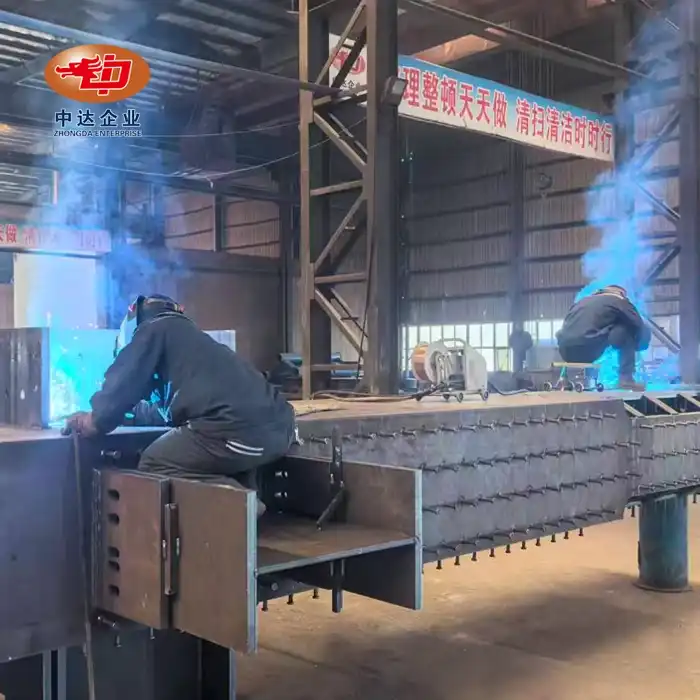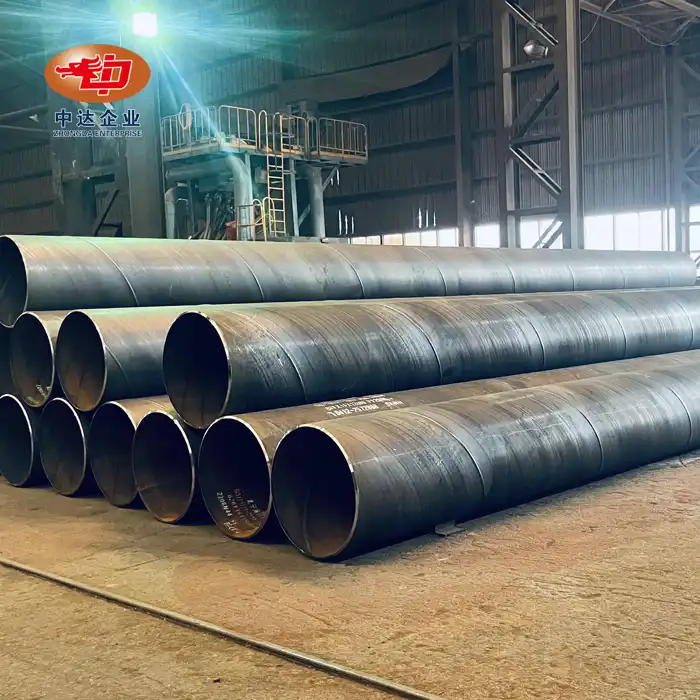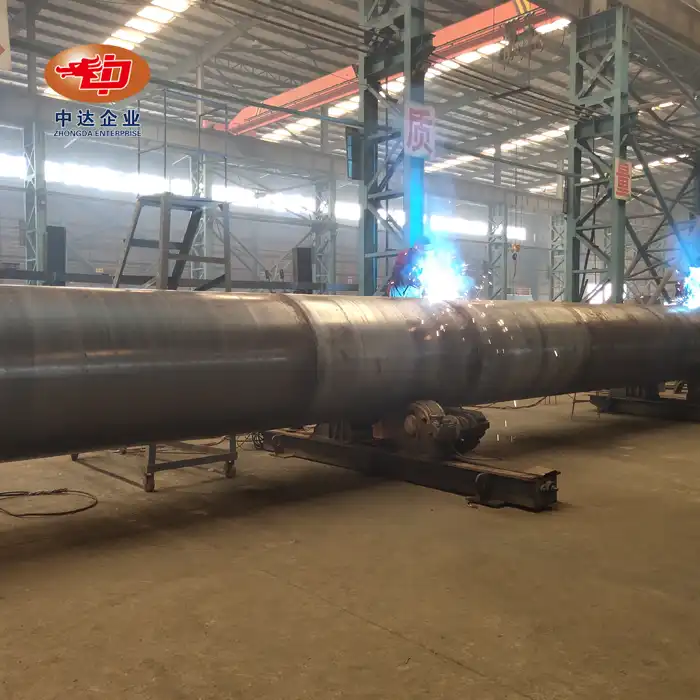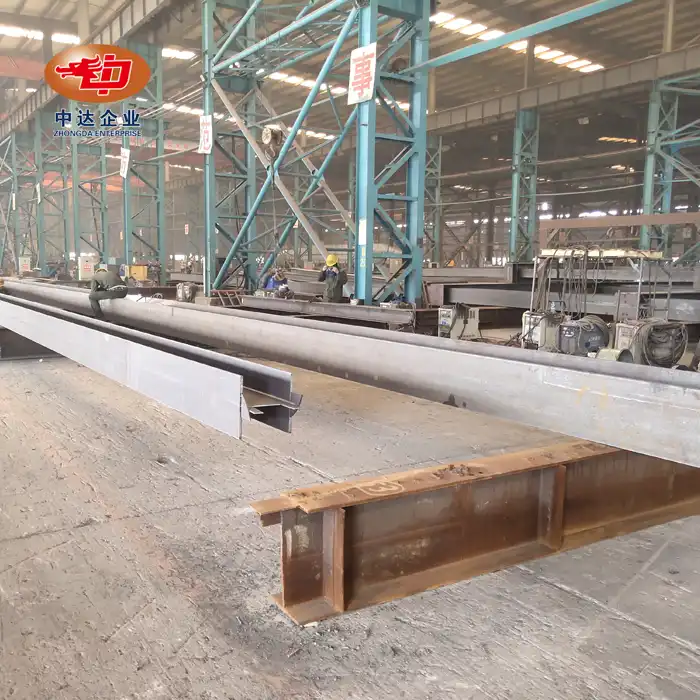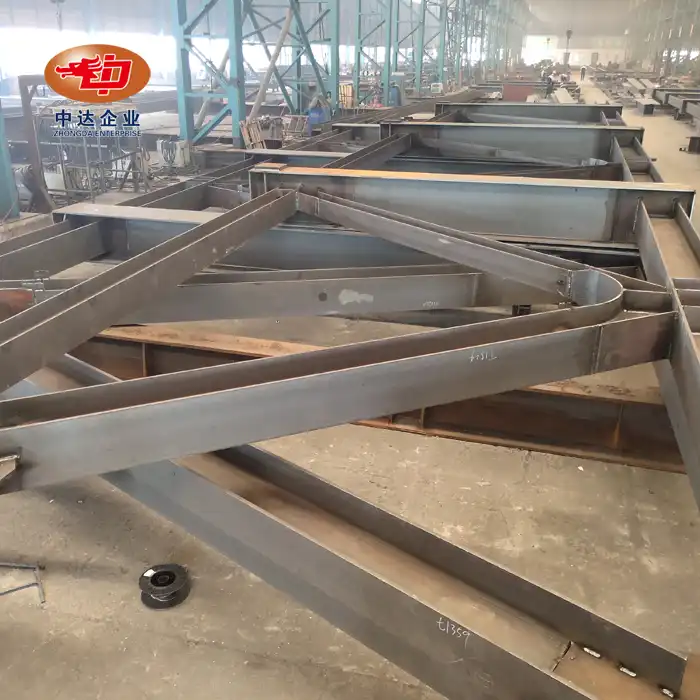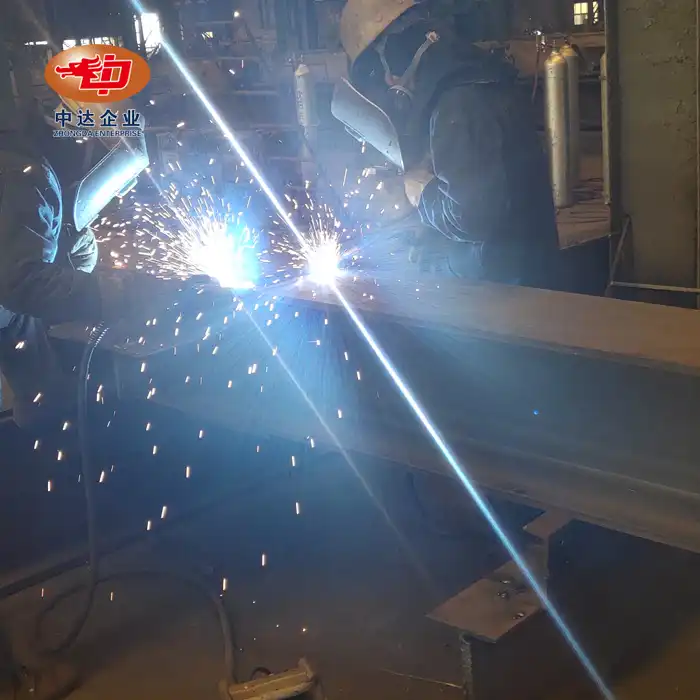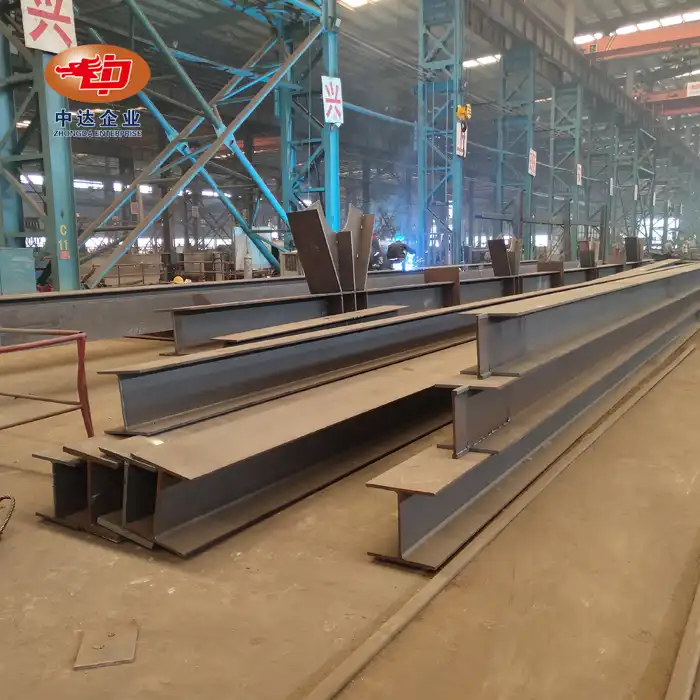Properties and Characteristics of Q345B Steel
Chemical Composition and Mechanical Properties
Q345B steel boasts a carefully balanced chemical composition, featuring key elements such as carbon, manganese, and silicon. This unique blend contributes to its remarkable mechanical properties, including high tensile strength ranging from 470 to 630 MPa and a minimum yield strength of 345 MPa. The steel's excellent ductility allows for efficient fabrication and forming processes, making it a versatile choice for various structural applications.
Weldability and Fabrication Advantages
One of the standout features of Q345B steel is its exceptional weldability. The material's low carbon equivalent value ensures that it can be welded with minimal preheating requirements, reducing fabrication time and costs. This characteristic is particularly valuable in large-scale infrastructure projects where extensive welding is often necessary. Additionally, Q345B steel exhibits good machinability, allowing for precise cutting and shaping to meet specific project requirements.
Corrosion Resistance and Durability
Q345B steel demonstrates impressive corrosion resistance, especially when compared to conventional carbon steels. Its ability to form a protective oxide layer helps shield the underlying metal from environmental degradation, extending the lifespan of structures and reducing maintenance costs. This durability is crucial for infrastructure projects exposed to harsh weather conditions, industrial environments, or marine atmospheres, ensuring long-term structural integrity and safety.

Applications of Q345B Steel in Infrastructure Projects
Bridge Construction and Rehabilitation
Q345B steel has become a preferred material for bridge construction and rehabilitation projects worldwide. Its high strength-to-weight ratio allows for the design of longer spans and more efficient structural systems, reducing the overall weight of bridges while maintaining exceptional load-bearing capacity. The steel's durability and corrosion resistance are particularly beneficial for bridges exposed to harsh environmental conditions, such as those crossing bodies of water or subjected to de-icing salts.
High-Rise Buildings and Skyscrapers
In the realm of vertical construction, Q345B steel plays a vital role in erecting tall buildings and skyscrapers. Its high yield strength enables the creation of slender yet robust structural members, maximizing usable floor space while ensuring the stability and safety of these towering structures. The steel's excellent fire resistance properties also contribute to enhanced building safety, meeting stringent code requirements for high-rise construction.
Industrial Facilities and Heavy Equipment
Q345B steel finds extensive use in the construction of industrial facilities, including manufacturing plants, refineries, and power stations. Its ability to withstand heavy loads and resist fatigue makes it ideal for supporting heavy machinery and equipment. Moreover, the steel's durability in challenging environments ensures the longevity of these critical facilities, minimizing downtime and maintenance requirements. In the realm of heavy equipment, Q345B steel is utilized in the fabrication of cranes, excavators, and other large machinery, providing the necessary strength and reliability for demanding operations.

Innovations and Future Trends in Q345B Steel Usage
Advanced Fabrication Techniques
The steel industry is continuously evolving, with new fabrication techniques enhancing the performance and efficiency of Q345B steel in infrastructure projects. Innovations in welding technology, such as friction stir welding and laser hybrid welding, are improving joint strength and reducing distortion in steel structures. Additionally, advancements in computer-aided design and manufacturing (CAD/CAM) systems are enabling more precise and complex fabrication of Q345B steel components, leading to optimized structural designs and reduced material waste.
Sustainable Construction Practices
As the construction industry embraces sustainability, Q345B steel is playing a significant role in green building initiatives. The material's high strength allows for the use of less steel in structures, reducing the overall environmental impact of construction projects. Furthermore, Q345B steel's durability and recyclability align with the principles of circular economy, promoting the reuse and repurposing of steel components at the end of a structure's life cycle. Innovative surface treatments and coatings are also being developed to enhance the steel's corrosion resistance, further extending its service life and reducing the need for replacement.
Integration with Smart Infrastructure Technologies
The future of Q345B steel in infrastructure projects is closely linked to the development of smart and connected technologies. Researchers are exploring ways to incorporate sensors and monitoring systems directly into Q345B steel structures, enabling real-time assessment of structural health and performance. This integration of steel and technology promises to revolutionize infrastructure maintenance, allowing for predictive maintenance strategies and early detection of potential issues. As smart cities continue to evolve, Q345B steel will likely play a crucial role in creating resilient and adaptive infrastructure systems capable of responding to changing environmental conditions and urban needs.
Conclusion
Q345B steel has established itself as an indispensable material in the realm of heavy-duty infrastructure projects. Its exceptional strength, durability, and versatility make it an ideal choice for constructing bridges, skyscrapers, and industrial facilities. As the construction industry continues to evolve, Q345B steel remains at the forefront of innovation, adapting to new fabrication techniques, sustainability requirements, and smart infrastructure technologies. The ongoing advancements in Q345B steel applications promise to shape the future of infrastructure development, enabling the creation of more resilient, efficient, and sustainable structures worldwide.
FAQs
What are the main advantages of using Q345B steel in infrastructure projects?
Q345B steel offers high strength, excellent weldability, and good corrosion resistance, making it ideal for heavy-duty applications.
How does Q345B steel contribute to sustainable construction?
Its high strength allows for less material usage, and its durability and recyclability align with circular economy principles.
Can Q345B steel be used in marine environments?
Yes, its corrosion resistance makes it suitable for marine applications, though additional protective measures may be necessary for extreme conditions.
How does Q345B steel compare to other structural steel grades?
Q345B offers a balance of strength, ductility, and weldability that often surpasses traditional structural steels, making it a versatile choice for various projects.
Expert Q345B Steel Solutions for Infrastructure Projects | Zhongda Steel
At Shenyang Zhongda Steel Structure Co., Ltd., we specialize in providing high-quality Q345B steel solutions for heavy-duty infrastructure projects worldwide. Our state-of-the-art facility, equipped with advanced BIM-driven prefabrication technology and ultra-thick plate cutting capabilities, ensures precision and efficiency in every project. With our expertise in -60°C Weathering Steel Anti-corrosion Technology and a proven track record in global infrastructure development, we're your ideal partner for innovative, durable steel solutions. Contact us at Ava@zd-steels.com to discuss your project needs and experience our commitment to engineering excellence.
References
Zhang, L., & Wang, Q. (2020). "Mechanical Properties and Microstructure of Q345B Steel in Infrastructure Applications." Journal of Materials Engineering and Performance, 29(8), 5123-5131.
Chen, Y., et al. (2019). "Fatigue Performance of Q345B Steel in Bridge Structures: A Comprehensive Review." Engineering Structures, 198, 109432.
Liu, H., & Li, X. (2021). "Innovations in Q345B Steel Fabrication for High-Rise Buildings." Advances in Civil Engineering Materials, 10(1), 20-35.
Wang, J., et al. (2018). "Corrosion Behavior of Q345B Steel in Marine Environments: Implications for Offshore Structures." Corrosion Science, 131, 180-193.
Zhao, M., & Zhang, Y. (2022). "Sustainable Construction Practices Using Q345B Steel: Case Studies and Future Trends." Journal of Cleaner Production, 330, 129789.
Li, K., et al. (2023). "Smart Infrastructure Technologies Integrated with Q345B Steel: Enhancing Structural Health Monitoring." Sensors and Actuators A: Physical, 347, 114084.











